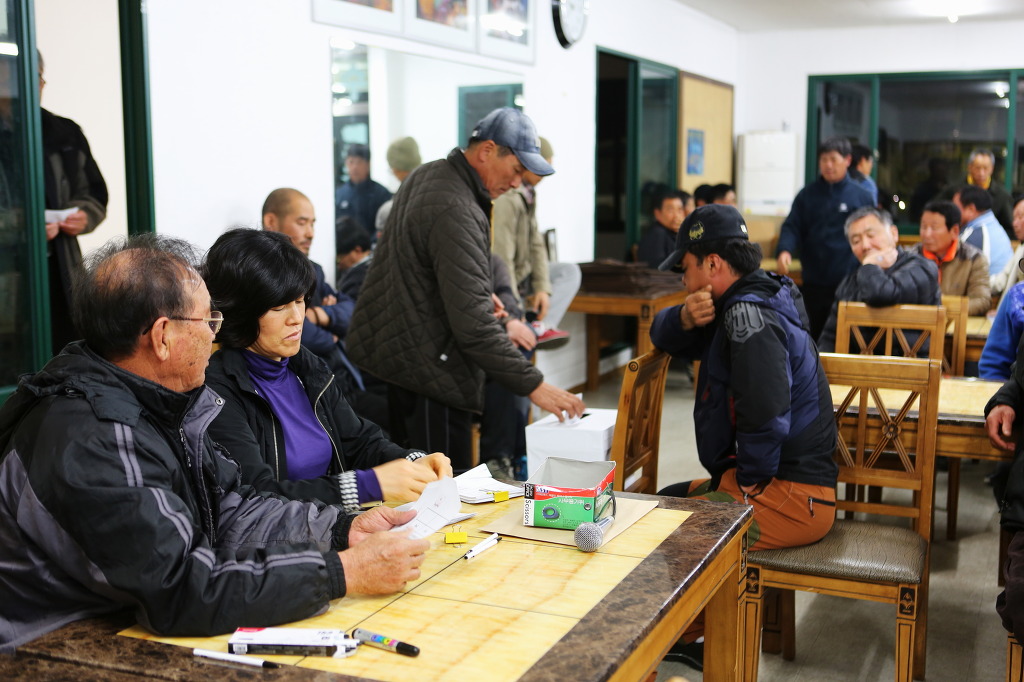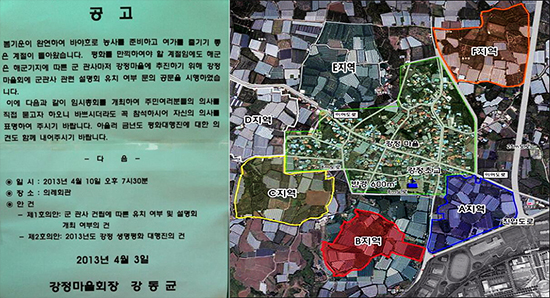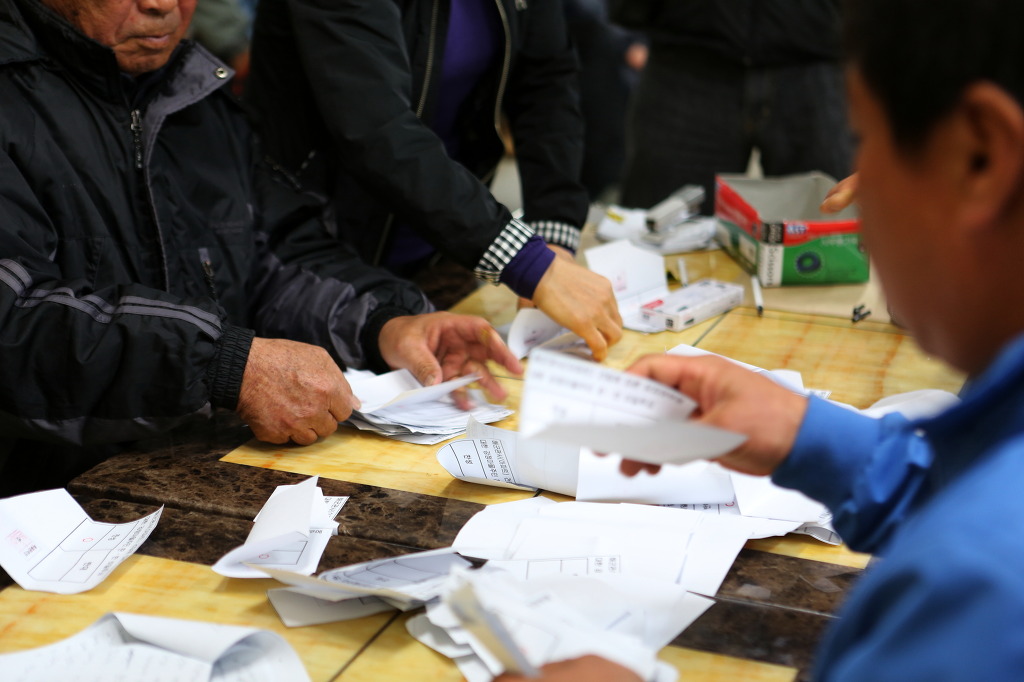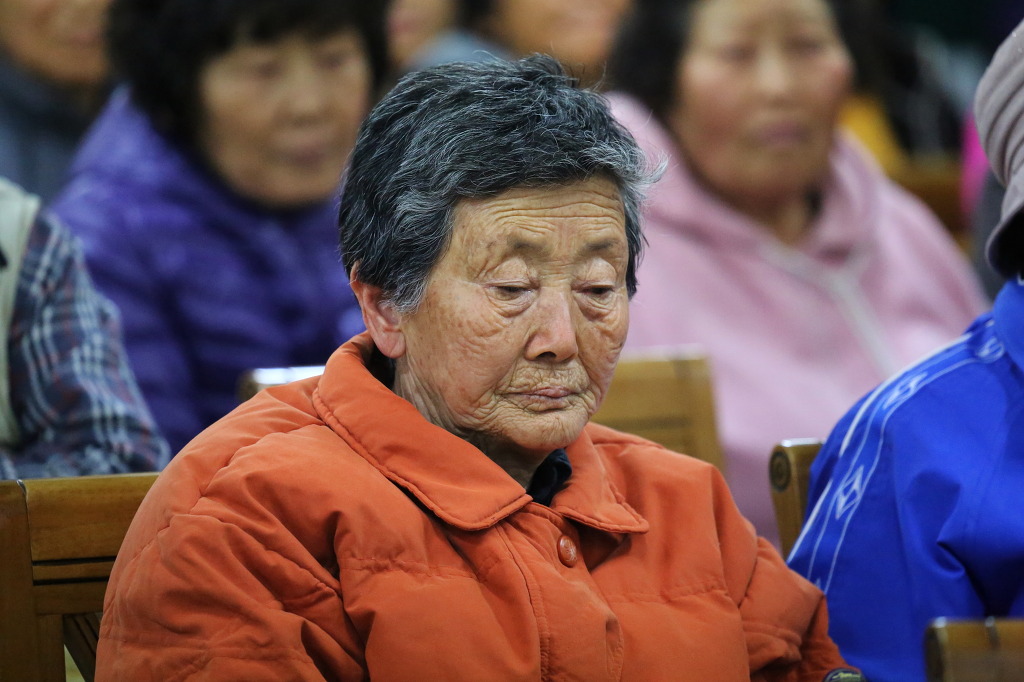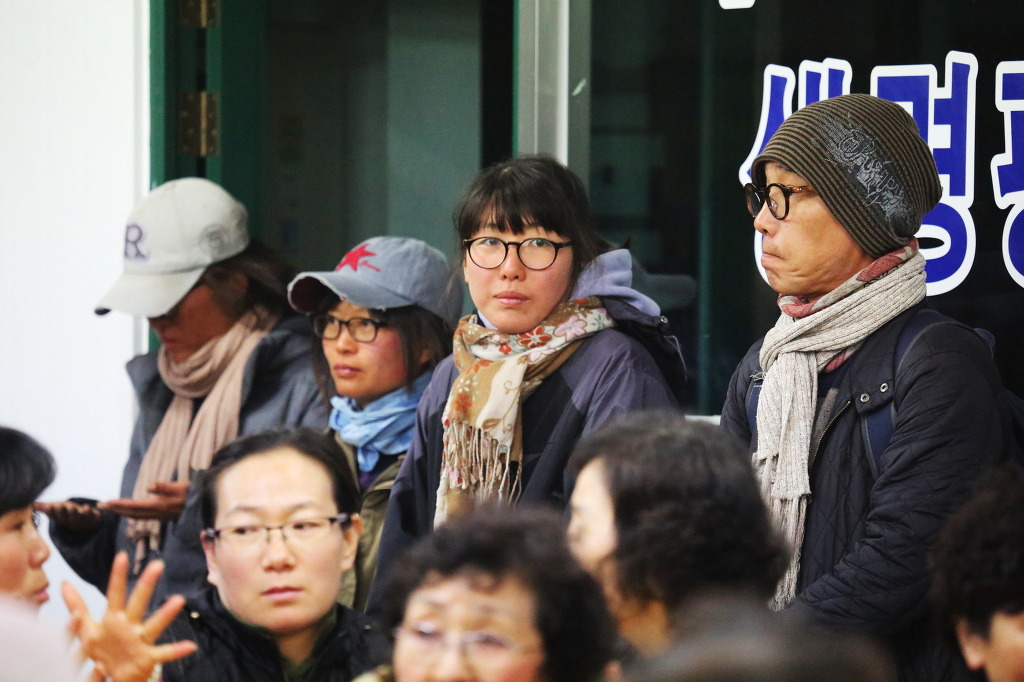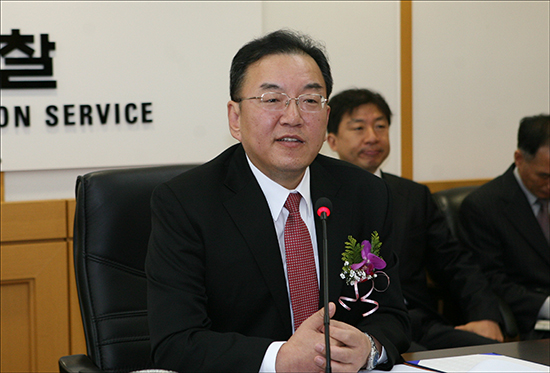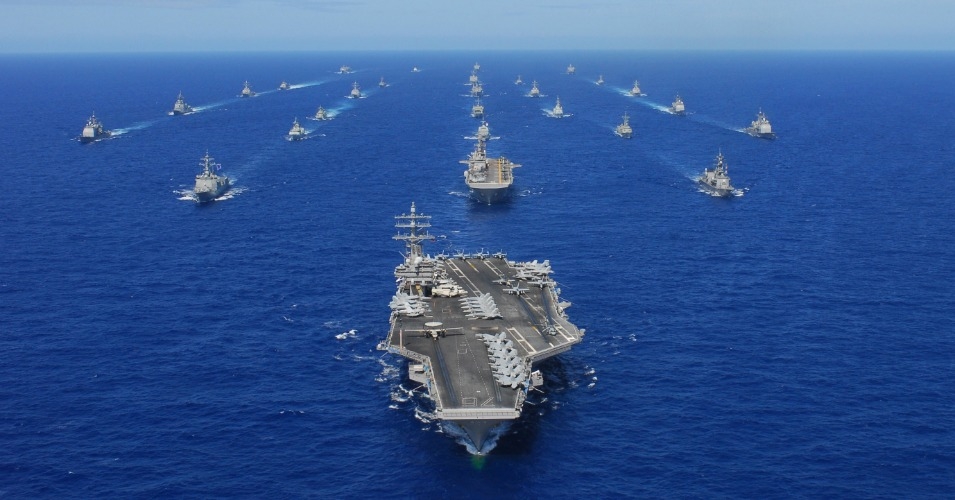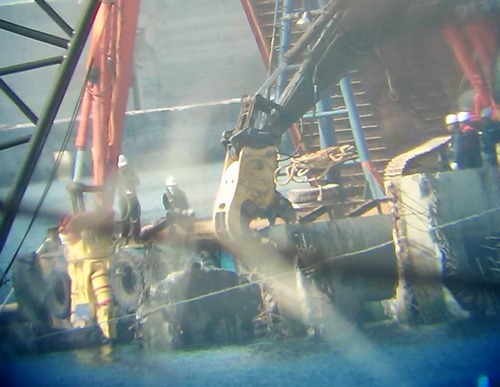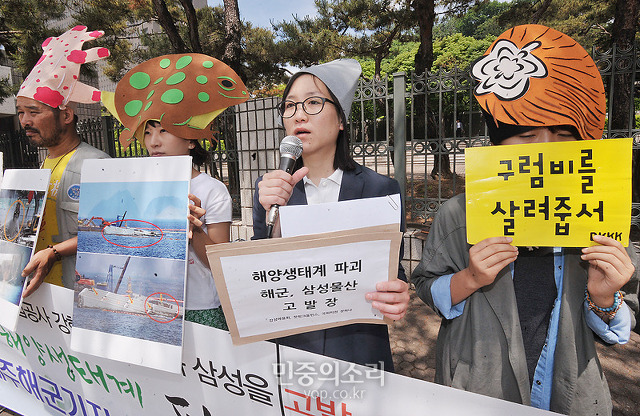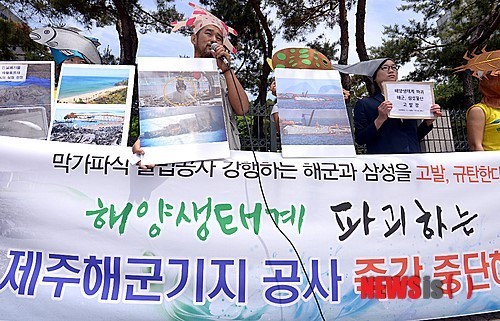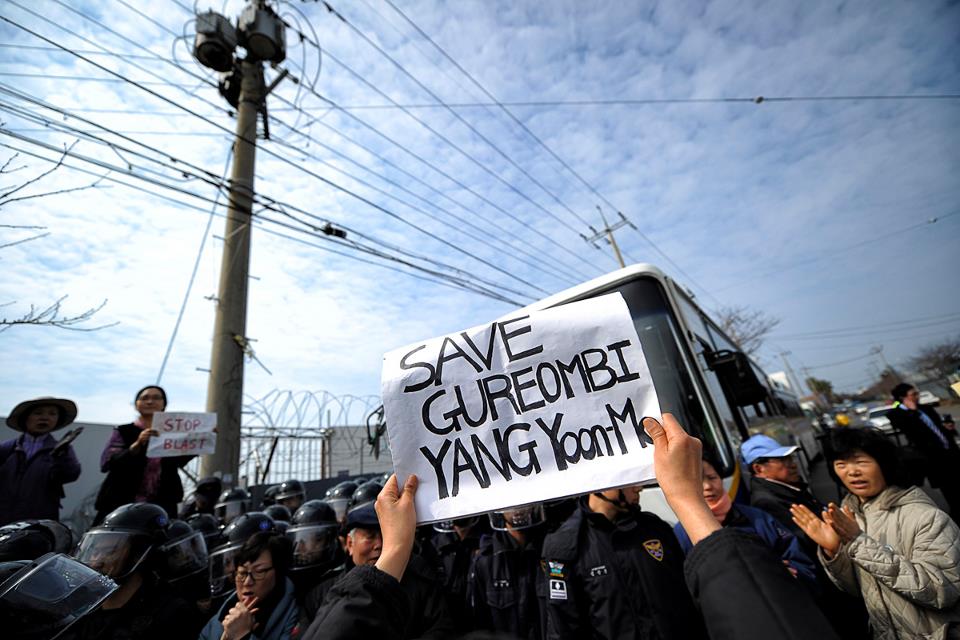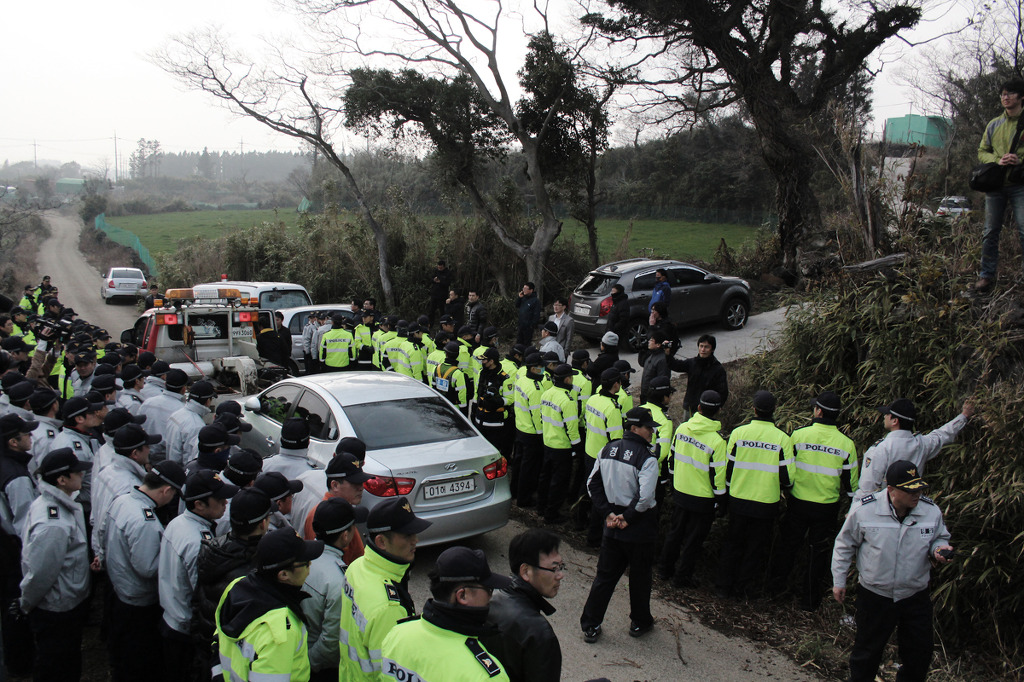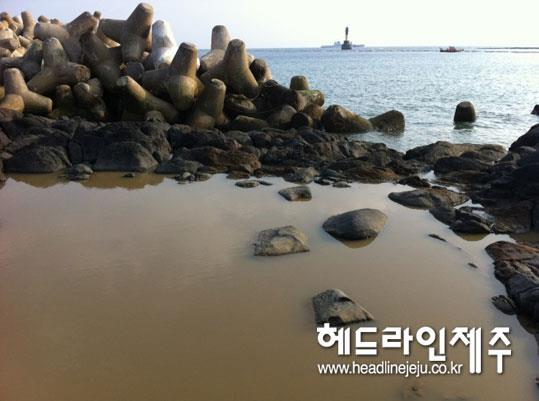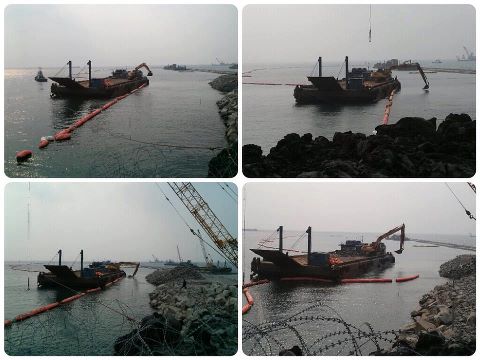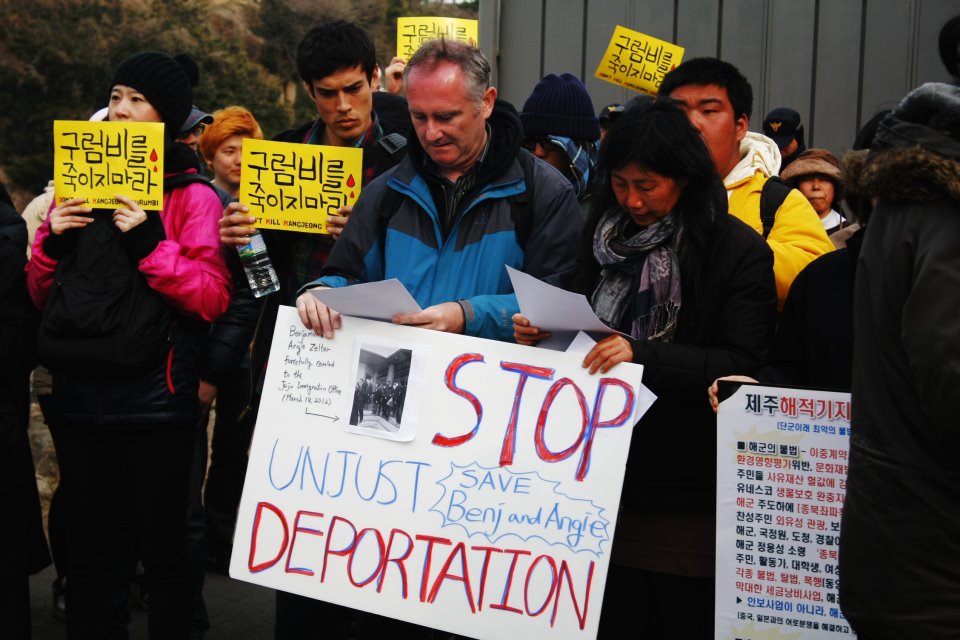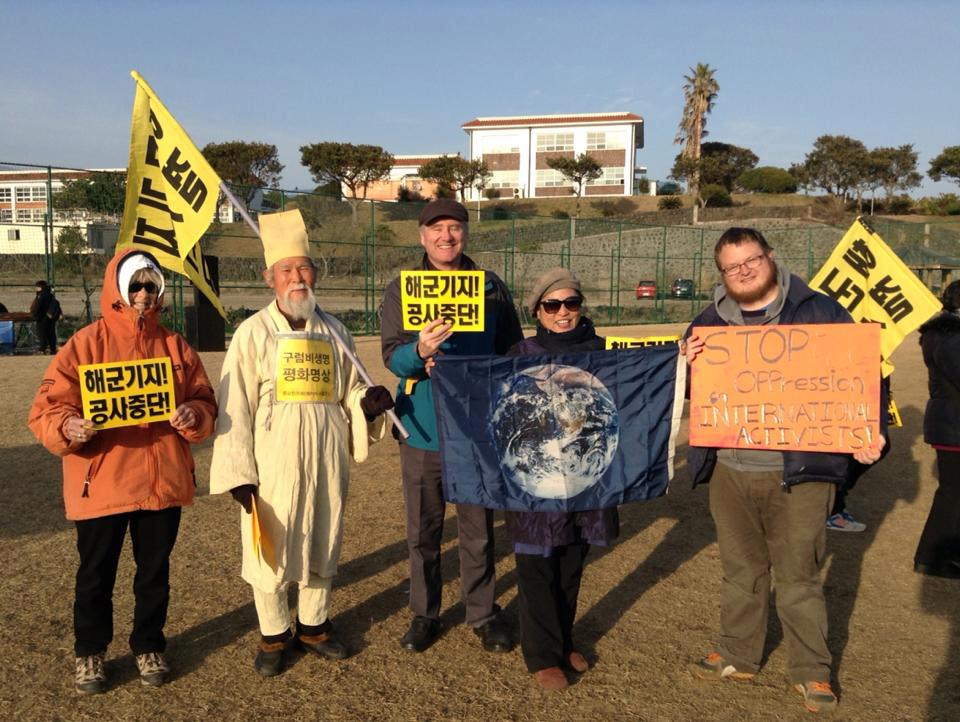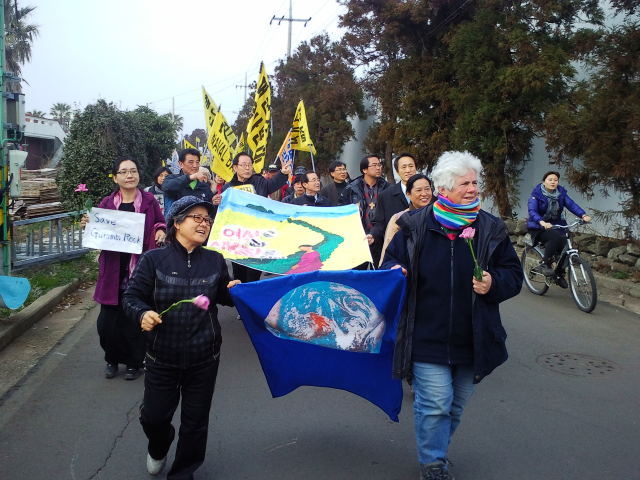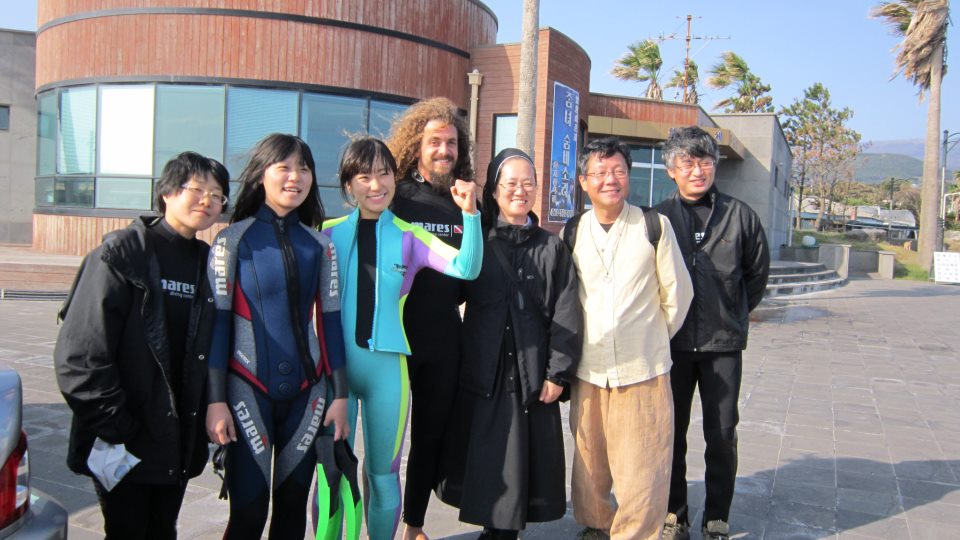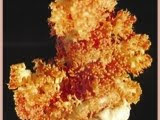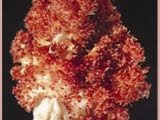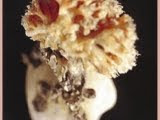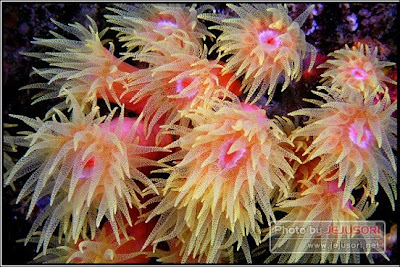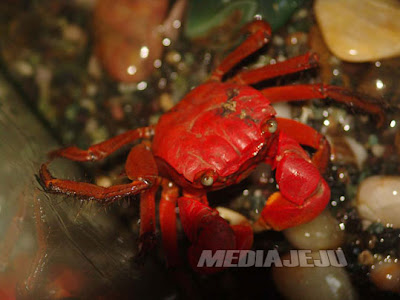Last September, I attended a remarkable gathering in Okinawa of impassioned young people from all over the Asia-Pacific. They convened at a critical moment to urgently discuss ramped-up militarism in their region. Thousands of hectares of exquisitely wild marine environments, peaceful communities and local democracy are now under extreme threat. Participants hailed from: Taiwan; Jeju (South Korea); the Japanese Ryukyu islands; Indonesia; New Zealand; and the Japanese Ogasawara islands. I was invited to represent Hawaii, where the headquarters for the U.S. Pacific Command (PACCOM) are located, and where decisions are made that have profound consequences for these young activists, and the rest of the world. These include missile base-building on pristine islands, rampant navy war games that destroy coastlines, reefs and other vital ecosystems, not to mention adding to climate change, pursued with no regard for local opinion.
It’s all a result of the “Pacific Pivot,” announced by President Obama in 2011, to move 60% of U.S. Navy and Air Force resources from the Middle East to the Asia-Pacific. The stated goal is to maintain “balance” in the ongoing battle with China for regional military and economic hegemony. A particularly dangerous expression in this effort came a few weeks ago, when a U.S. missile-carrying warship challenged China by passing through disputed waters surrounding China’s artificial island bases in the South China Sea. It is the latest example of brinkmanship after years of provocative moves by the U.S. in the so-called interest of balance. But, the grim fact is there is no balance in the Pacific. The little publicized reality is that the United States, located thousands of miles from China’s coast, already maintains over 400 military installations and 155,000 troops in that part of the world. Meanwhile China, even with its newest artificial island-bases in the South China Sea, will have a grand total fewer than ten.
At the conference, entitled “Peace for the Sea Camp” it was noted that one of the most destructive developments has been Defense Secretary Ashton Carter’s 2015 campaign to forge a new network of aggressive bilateral agreements with militaries from other countries such as South Korea, the Philippines, Australia — and most insidiously, Japan — to augment American dominance. These alliances are reinforced economically by the Trans-Pacific Partnership (TPP), an essential component of the fool’s endeavor to contain China within its own hemisphere. However, no one at the conference took sides with one hegemon or the other. China was also criticized for having smothered thousands of acres of healthy reef with concrete and crushed coral, to build its artificial islands. To be sure, one of the primary purposes of the gathering was to establish a global voice against all military desecration of islands and the seas. Here’s the full story on the crisis and resistance.
Outsourcing Military Force
A seismic event took place on the first day of the conference that underscored the gathering with new urgency. Prime Minister Shinzo Abe had managed to push through highly unpopular legislation to disempower Japan’s “peace constitution,” implemented in 1947 by General Douglas MacArthur. Abe acheiieved this despite 100,000 protestors shouting “NO WAR” for weeks in front of the Japanese Diet. The following day, Abe’s public approval rating plummeted to 38.9 percent. Now, Japan’s military is permitted to act offensively, no longer only in self-defense mode. It can also surveil other countries for the first time in modern history, and establish a global arms industry (imagine, Honda-quality drones and tanks). According to a Pentagon official, this will give Japan “greater global presence.” According to The Nation’s Tim Shorrock, it will turn Japan into America’s proxy army in Asia.
China is correct to view the watered-down constitution as yet another provocation, especially since it has cleared the way for a turbo-charged reworking of the 64-year-old U.S.-Japan Security Treaty to take effect. The revised treaty essentially encourages Japanese aggression toward its neighbors — a 20th century scenario that Asia-Pacific people do not want to relive. For them, Abe’s politics are like a zombie risen from the dead. Since taking office in 2012, Abe has boosted the military budget, taken an aggressive stance toward China and has also denied Japan’s role in forcing hundreds of thousands of women into sexual slavery for its troops during World War II. He is the perfect, barbaric accomplice to carry out the Pentagon’s audacious designs on Asia.
For islanders like those at the Okinawa conference who live on the front lines of this new world, the new treaty poses immediate threat. It allows four lovely islands in the Ryukyu archipelago to be transformed into state-of-the-art military bases — with missiles pointed at China. It’s a way the U.S. can “outsource” base-building to client states like, in this case, Japan.
Outsourcing base-building is a fairly new Pentagon strategy. It came about partially due to the U.S. wearying of growing global disgust with its foreign basing. For example, the routine protests of tens of thousands of intractable Okinawans has already succeeded in stalling new base construction there for the past 20 years — a big headache for the Pentagon. The solution, surrogate base-building, is also an enormous cost-saving measure. For example, the construction of the Jeju naval base is South Korean in name, but it fulfills the Pentagon’s directive to contain China. It will also port U.S. aircraft carriers, attack submarines and Aegis-missile carrying destroyers. Because the base is “officially” South Korean, costs are externalized — of construction, of environmental responsibility, and of policing eight years of still ongoing protests. Now four Japanese Ryukyu islands will also be put to service to menace China — at no direct expense to the U.S.
The Ryukyu basing project, now under construction, would not have been able to move forward without the culmination of a longstanding collaboration between the U.S. and Japan to finalize three milestones during 2015. The milestones, which work together symbiotically, are: 1) Disabling Japan’s pacifist Constitution; 2) Beefing up of the U.S.-Japan Security Treaty; and 3) Reaching a TPP agreement which would work hand-in-glove with military force to pair economic dominance with military hegemony. More on this later.
Environmental Impacts
The Ryukyu Islands stretch like a strand of emeralds 900 miles south from mainland Japan to Taiwan. They are rich with crystalline rivers, vital reefs, and endemic flora and fauna. The Japanese people, still coping with the post-apocalyptic effects of a triple-reactor meltdown at Fukushima, understandably celebrate the Ryukus (those which are still pristine) as priceless natural treasures. But alas, Japan’s government has begun carving up mountains, dredging coral and bulldozing forests in order to rapidly build the massive, multi-island military infrastructure. To witness the lush habitats of hundreds of remarkable species ripped off the face of the Earth is a sobering spectacle, equivalent to the Taliban blasting away the 1,700-year-old Buddha statues carved into Afghan cliffs.
Though the bases would be Japanese in jurisdiction, their function would be essentially American. They are intended to extend the encirclement of China started by South Korea’s Jeju base and those on Okinawa. Three lush, wondrous islands — Amami-Oshima, Miyakojima, and Ishigaki — are now slated for missile-launching capability and live-fire training ranges. On Yonaguni, so far south it is only 69 miles from Taiwan, the plan is to build microwave radar antennas to spy on China — an activity that would have been illegal before the implementation of the new constitution. Yonaguni residents are not happy. “There’s a lot of worry that the island could become a target for attack if a base is built there,” a Japanese defense ministry official told the Mainichi Shimbun.
Oddly, the defense ministry first revealed the base construction plans directly to the national media, but not to the island residents. Mayumi Arata, a respected elder of Amami-Oshima, the most northerly island slated for construction, said the only information that people were given was a 15-minute talk by a government official in July 2014. The bureaucrat said troops would be stationed on the island. Nothing was ever mentioned of the missile base, the radar station, the firing range, the heliport, or any accoutrements. It wasn’t until newspapers published the plans that the people learned they were to be heavily militarized. Anti-base groups quickly formed on all the affected islands, but not without blowback from the draconian Abe regime. On Miyakojima, a lawsuit was filed against the government for blacklisting protestors from employment.
The 275-square-mile island of Amami-Oshima is a place so teeming with biodiversity that it has been nominated for UNESCO World Heritage status. Seventy-three thousand people live on 30 percent of the island. The other 70 percent is comprised of rolling hills that are entirely wild and carpeted with a thick green tangle of endemic, original forest. A crab-filled mangrove swamp is set inland. Ringing the island is a coral reef with adorable pufferfish noted for sculpting astonishing undersea sand mandalas, and loads of calico-shelled cone snails. Drinkable water bleeds from cracks in fern-covered cliffs. The island is home to 300 species of birds, butterflies as big as your hand, jade and gold frogs, salamanders, sea and freshwater turtles, the unique Ryukyu ayu fish, endemic orchids and rare ficus trees. The small-eared Amami rabbit, one of many species found only here, is sometimes called a “living fossil” because it represents an ancient Asian lineage that has elsewhere disappeared. There has even been a sighting off the coast of the extremely rare North Pacific right whale, a species of which it is believed only 30 remain.
Needless to say, a firing range in the forest and state-of-the-art missile base will decimate Amami-Oshima’s natural wonders. Mamoru Tsuneda, a natural park counselor of the Environmental Ministry, laments, “There are no laws to protect the nature on this island.”
Residents have economic concerns as well. Kyoko Satake, an artist and boutique owner, observed, “We see how the United States has only the very rich or the very poor. That’s because you spend all your money on war. We don’t want to be like that. We want to keep our middle class.”
The most southerly island to be militarized is the 11-square-mile island of Yonaguni. It is strategically positioned less than 100 miles from the uninhabited Senkaku islands, a piece of geography being hotly contested with China. When I visited Yonaguni before the activist gathering began, I saw herds of wild, endemic ponies roaming freely on fenceless pastures and even on streets. But now their main watering hole has been replaced by bulldozers churning out a radar surveillance station, scheduled for completion in 2017. Entomologists are alarmed that the radar will kill many of the island’s celebrated, but fragile, butterfly species.
As on Amami-Oshima, there has been no transparency in its construction, let alone any kind of Environmental Impact Statement. Residents were told that such information is “top secret.” It wasn’t until the bulldozers began that they saw that the high-intensity microwave antennas were to be only about 600 feet from neighborhoods, including an elementary school. Several mothers with young children decided to move off the island forever.
At a certain point, all this preparation for war becomes indistinguishable from war itself. The fight against terror becomes terror itself. No one knows that better than the Jeju islanders of South Korea, whose farms, fisheries and freshwater springs were destroyed to build a base. The Okinawans also know it. They live daily with military jets and helicopters searing through the skies. It seems the same hellish fate is in store for all people and creatures of the islands targeted for militarization. A high school science teacher and Amami-Oshima native, Hirohumi Hoshimura, observed, “Tokyo says my island is for defense. But to me, this is my home.”
Meanwhile, defense industries on both sides of the Pacific are salivating. Japan’s Ministry of Defense has a proposed a record-high budget, to equip the new bases with 17 Mitsubishi anti-submarine warfare helicopters, 12 Boeing V-22 Osprey tilt-rotor aircraft, three Northrop Grumman Global Hawk drones, six F-35 fighter planes and Aegis destroyers (both manufactured by Lockheed Martin), one Kawasaki military transport aircraft, three Boeing Pegasus tanker aircraft, and 36 maneuver combat vehicles. Other purchases include BAE Systems amphibious assault vehicles and mobile missile batteries. And Japanese arms manufacturers have begun – for the first time ever — producing armaments for export. It’s a merger between militarism and corporate capitalism.
Butter, Guns and the TPP
From a strictly trade perspective, the TPP is confounding. From a geopolitical perspective, it makes a lot of sense. Jean-Pierre Lehmann elaborates in Forbes:
“TPP is a really strange mélange of 12 members, including five from the Americas (Canada, Chile, Mexico, Peru and the US), five from Asia (Brunei, Japan, Malaysia, Singapore and Vietnam), along with Australia and New Zealand. … Missing are large Asian economies, notably South Korea, India and Indonesia, all three members of the G20. Also missing of course is China; but that would seem to be deliberate … to contain China. Thus TPP is above all a geopolitical ploy with trade as a decoy.”
Given the dearth of economically significant Asian member nations in the pact, it is not perplexing why many analysts were predicting early on that the whole deal would collapse if Japan never signed on. It finally did in 2013. But as recently as April 19, 2015, gridlock prevailed at a Tokyo meeting between U.S. Trade Representative Michael Froman and Japan’s Economic Minister Akira Amari. The U.S. wanted Japan to eliminate its extremely high tariffs on agriculture — hundreds of a percent on rice and beef. Japan wanted to sell more cars in the U.S. but wasn’t keen to reciprocate by buying American cars.
It took the perceived threat of China establishing the Asian Infrastructure Investment Bank and other international deals to loosen the logjam. “The growing Chinese presence in the region has prompted Japan and the United States to speed up talks,” Masayuki Kubota, chief strategist at Rakuten Securities in Tokyo, told Agence France-Presse at the time. “Japan and the United States are feeling pressed to take the initiative before China crafts its own rules.”
So, only eight days after the Tokyo trade meeting flopped in April, Shinzo Abe arrived for a much-regaled week-long visit to Washington. He landed the same day that his Defense Minister Nakatani and Foreign Minister Kishida met in New York with Secretary of State John Kerry and Ashton Carter. There, the four cabinet members settled on a new set of defense guidelines that would expand Japan’s military.
The new guidelines articulated that Japan would now be permitted to take part in “an armed attack against a country other than Japan,” a radical departure from the original treaty. Other new activities included minesweeping to keep sea lanes open, intercepting and shooting down ballistic missiles, and disrupting shipping activities providing support to hostile forces – all responsibilities that the Ryukyu missile bases would be perfectly positioned to execute.
Apparently, granting Japan military powers was what it took to secure the TPP concessions. The next day, Abe and Obama were all smiles and waves in the Rose Garden, boasting about their new defense treaty in the same breath that they stressed they were committed to reaching a “swift and successful conclusion” to the TPP. And the very next day, Abe promised Congress he would have “his” legislature dismantle the peace Constitution by summer, so the new defense guidelines could take effect. He got a standing ovation.
It was not the following summer, but rather in autumn, that Abe made good on his word, managing to push through his aggressive interpretation of the constitution, much to the sorrow of the Japanese people. Sixteen days later, like clockwork, the TPP was reached.
TPP: It’s Not Just about Tariffs and Toyotas
When Defense Secretary Ashton Carter said in April, “The TPP is as important to me as an aircraft carrier,” he revealed the inextricable connection between the Trans-Pacific Partnership and militarism. Until that statement, the TPP had been treated as nothing other than the biggest, baddest free trade agreement to come along since NAFTA, CAFTA, TTIP and the rest. However, unlike the TPP, none of these other global trade deals were implemented to thwart a rival world power. President Obama summed things up last spring when he said of the TPP, “If we don’t write the rules, China will write the rules in that region.” So, TPP provides the rules; the Pentagon enforces them.
A look at the map clarifies how forces at play in the Asia-Pacific give a geopolitik context to the TPP. Off the southeast coast of China lies the South China Sea, through which over $5 trillion worth of trade passes annually, after squeezing through the Strait of Malacca. This is also the gateway through which all oil from the middle-east passes before it reaches China, Japan, and South Korea. Whoever controls the Strait of Malacca and South China Sea controls Asia’s economy, which, in turn, drives the world economy. In order for the U.S. to maintain authority over these far-flung hotspots, it must project military might – the most resented and costly form of power. That’s why Ashton Carter needs the TPP so bad: to justify mega-militarizing Pacific trade routes.
Is it any coincidence that all the Asia-Pacific TPP signatories, with the exception of Japan, Australia and New Zealand, can be found surrounding the South China Sea? Those nations are Malaysia, Singapore, Brunei, and Vietnam. For years, they, along with the Philippines and Taiwan, have been in heated disagreement with China over territory that includes critical sea lanes. China is claiming most of the sea for itself, a move which would castrate the TPP. (What good is a trade agreement without access to trade routes?) The stakes are so high that China went so far as to build seven artificial islands, totaling 2,000 acres, in the middle of the disputed Spratly Islands. China claims sovereignty over the new islands, as well as the surrounding sea within twelve nautical miles.
In such unpredictable circumstances, solid alliances with the China-vulnerable countries are indispensable to the Pentagon. Their membership in the TPP exacts deference to U.S. hegemony. In exchange, they get the American muscle they need to stake out their own territorial claims, such as the warship that Carter sent directly into the contentious waters surrounding the artificial islands. This military excess is shaping 21st-century Asia, warping cultures, destroying countless ecosystems, and costing billions of dollars. Other examples: four Littoral Combat Ships (at about $700 million apiece) have been ported in Singapore; Marines have begun rotating between bases in Australia, Okinawa, Guam and Hawaii. Most ecologically destructive are the unprecedented number of joint naval exercises taking place in the western Pacific with tens of thousands of troops at a time. Participating militaries come from Malaysia, Singapore, Brunei, Vietnam, the Philippines, Indonesia, Australia, New Zealand, South Korea, Japan, Bangladesh, Cambodia, Thailand, and Timor Leste. Across both northern and southern hemispheres, the fury of torpedoes, sonar and bombs blasts through reefs and marine habitats almost year-round with no meaningful environmental regulation whatsoever.
To put it bluntly, the TPP is not merely a set of rules; it locks in and justifies a defense empire to counter China.
But many U.S. lawmakers need more incentive to sign onto any trade deal. “When the administration sells me on this, it’s all geopolitics, not economics: We want to keep these countries in our orbit, not China’s,” said Sen. Charles E. Schumer, D-N.Y. “I agree with that. But I need to be sold on the economics.”
Teens Stand Up to Oppose War Law
In Japan, those who remember the horrors of war have always been stalwart pacifists. So it came as an enormous surprise when legions of the younger generation camped out for a month in front of the Diet, chanting and beating drums, as Abe forced through his despised militaristic legislation. Spearheading the movement has been Students’ Emergency Action for Liberal Democracy (SEALDs), a group that skyrocketed to popularity by incorporating a hip-hop aesthetic into its political messaging. Other organizations sporting their own acronyms have popped up like mushrooms: Teens Stand Up to Oppose War Law (T-ns SOWL), MIDDLEs and even OLDs. Regardless of age, though, they all brandish signs with the same message, such as “War is Over,” “Change the Prime Minister” and “TPP – NO! People’s Pacific Partnership – YES!”
Equally significant is the wide-sweeping, movement of young Asia-Pacific visionaries that seemingly came out of nowhere to organize Peace for the Sea Camp. Its very trans-national quality flies in the face of what a Pentagon official on Guam once told me: “Unlike European countries, Asian countries will never be able to get along – that’s why we’re there, in Asia.”
But they didn’t come out of nowhere; they had emerged from the highly organized Christian movement opposed to base construction on Jeju Island, South Korea. The ferociously peaceful opposition had attracted pilgrim pacifists from across Asia, and every other peopled continent. They had come to take part in daily religious services that blocked traffic at the gates of the construction site for the past eight years. It was a tearful irony that it was during the Peace for the Sea Camp when the first Aegis-missile destroyer ported at the Jeju base.
One evening of Peace for the Sea Camp was devoted to screening a 2014 Irish documentary about the Jeju navy base protests. The announcer voice-over posited that the completion of the base will herald the beginning of the Cold War in the 21st century, between the U.S. and China. Hindsight has proven him correct; in only one year, tension has increased with the U.S. race to solidify an anti-China political bloc through Japan’s shady new legislation, trade, and epidemic joint military exercises. Not to mention the inflammatory plan to lasso China with a string of new missile bases in the Ryukyu Islands.
Shortly after the conference, the activists produced a manifesto to articulate the voices of those impacted by the Pacific Pivot. Here is an excerpt:
“We fully understand that this shift will not bring about greater human security but will instead yield the conditions for a far greater risk of war and tremendous environmental destruction. We further recognize that these changes have been fueled by the global weapons industry, which reaps enormous profits from increased military tension and conflict, while ordinary people and the wider ecosystem suffer the inevitable consequences.
We cannot leave this work to political leaders and governments, which largely answer to corporate interests and the military-industrial complex. We challenge the prevailing assumptions behind the current configuration of geopolitics that takes for granted the precedence of nation-states, military interests, and capitalist accumulation.
We will instead create another kind of geography. Through our Peace for the Sea Camp and similar projects, we are already creating alternative political communities based on a sustainable economy, the ethics of coexistence, and our shared responsibility to preserve peace.”
Apparently, the Pentagon official’s belief that Asian countries are incapable of getting along, is wrong.
